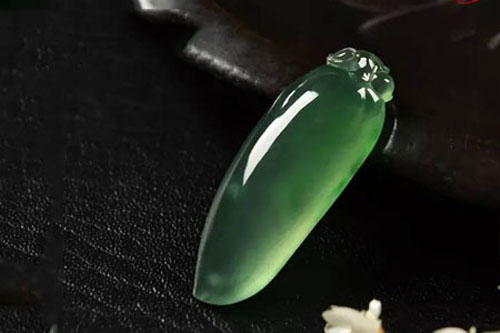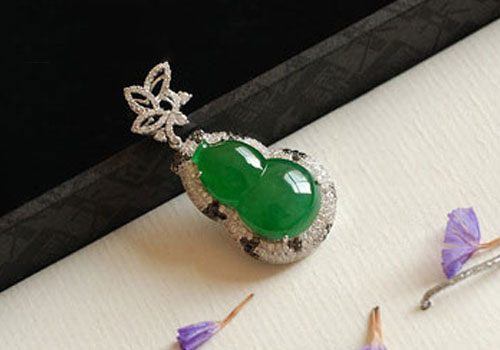In general, jade identification refers to the identification of jadeite products. There are generally two methods of instrument identification and manual identification. Instrument identification is simply to identify the authenticity of the jade through the instrument. It can test the reliable basis through the means of modern science and technology, and is generally only mastered by professional workers. What should we look at for the selection of jadeite?

1, structure
The structure of jadeite is a variegated interlaced structure, which refers to a structure in which fine-fibrous mineral crystals around transparent granules are intertwined under metamorphism. In the jade, there are small lumpy white flowers composed of opaque or slightly transparent white fibrous crystals, so it is called "stone flower" or "stone brain".
2, work
First of all, look at its roundness. For example, if the outline is symmetrical, if it is asymmetrical, it will affect the appearance. Secondly, look at the relationship between the thickness of the sliver and the circle. Generally speaking, the circle is small, and the strips should be fine; the circle is large and the strips are thick. For example, the inner diameter of the ring is 50 mm to 55 mm, the diameter of the strip is 6 mm to 8 mm, the inner diameter of the ring is 56 mm to 65 mm, and the diameter of the strip is 8 mm to 10 mm.
Finally, see if the surface is polished (polished). The size of the ring of the good jade jade bracelet is harmonious and beautiful with the thickness of the sliver. The processing is fine and regular, the surface is polished well, the hand touches evenly and has a sense of lubrication. Goodly engraved bracelets with patterns and patterns, finely carved, polished in place, symmetrical, reasonable, and feel good.
3, pit species
The pits of jadeite are composed of structure and texture, and jadeite is composed of small crystals. The smaller the crystal grains, the more dense the texture, the better the transparency, and the better the effect of polishing. In the jewelry industry, the pits are divided into old pits (also known as old species) and new pits (also called new species). The old pits are bright in color, and the color and the ground are integrated into one, with high transparency and best quality. The new pit, although the color is also fresh, but the transparency is poor. The old pit and the new pit are determined according to the age of jade formation.

4, color
The difference in color grade of jadeite is reflected in the value of the jade. When appraising and appraising jadeite, it must distinguish its color. It is mainly red, green and purple, green in monochrome jade, rich and pure purple, Red is the high-grade color of jade, especially green is the most expensive. The green of jadeite should be strong, yang, pretty, positive, and harmonious.
The evaluation of emerald green has a cross-mouthed "strong, yang, pretty, positive, and; light, yin, old, evil, flower". Green varieties are best in sapphire green, glass green, brilliant green and green seedling green. Others are: gray green, green, oil green, dark green, blue green, melon green, spinach green, blue water green, bean green bean green, parrot green, green onion, yellow green.
5, water head
The water head is the transparency of the jade. The higher the water head, the better the germplasm and the more precious it is. Care must be taken when observing the emerald head, as transparency is related to the thickness of the jade itself. In addition, special care must be taken to make the finished jade products, such as hollowed out in the middle of the finished product.
Also pay attention to the agate substitute, because the transparency of the agate is also better, so someone will use the agate color to imitate the emerald. In Hong Kong and Taiwan, the transparency of jadeite will also be divided. For the "pass", "release", "transparent", "ice", "ying" and other levels, of which "Ying" is the top grade.
6, the ground
The emerald's land is better, whether it is ç¿¡ or ç¿ , the outer part of the texture should be fine and even, the inner part of the texture should be solid, fine, clean, and the water head is good, the good land must be coordinated with the emerald color, and take care of each other, thus setting off Rich in green. Emerald land is best for glass and egg white.
The common background color of jade is colorless, white, light yellow, brownish gray, gray, light green, light blue, lavender, grayish green and so on. Together with green and transparency, the beauty of the emerald is brought out.
Changzhou Xinzhi Chain Information Technology Co.Ltd , https://www.zgczxzl.com